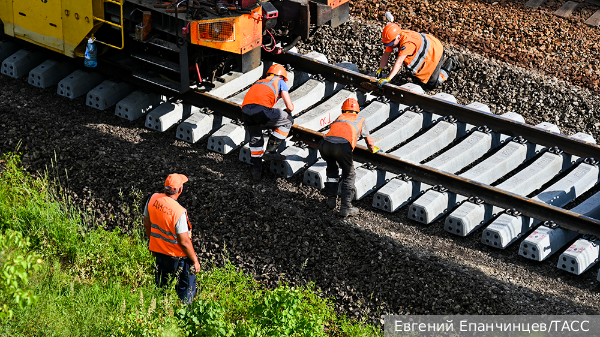
Red Sea shipping problem benefits Russian overland routes from Asia
By Rhod Mackenzie
Shipping via the sea lanes forms the backbone of trade corridors between the European Union and China, accounting for 90% of trade. According to Eurostat, imports from China in 2022 amounted to 627 billion euros, and exports amounted to 234 billion euros. The largest importer of goods from China among EU member states was the Netherlands - their imports amounted to 138.8 billion euros. They are followed by Germany – 130 billion euros and Italy – 57.5 billion euros. The main imports from China are telecommunications and electrical equipment, consumer goods . The top categories of goods exported from the EU to China were machinery and vehicles (52%), followed by industrial goods (19%) and chemicals (16%).
However, the European Union still remains under the thumb of inflation. The IMF study notes that import prices were responsible for 40% of the overall change in European consumer inflation over the past two years. Therefore, additional costs associated with importing goods from Asia may be passed on to final consumers.
All integration processes in the modern world take place under the main motive - reducing the costs of cross-border movement of goods, services, capital, and labor in order to increase productivity and improve competitive position. The rapid turnaround of Russian exports and trade from West to East, which occurred faster than anyone thought, was made possible largely thanks to Russia's constantly developing transport infrastructure. A number of federal target programs launched in the first half of the 2000s included the development of airports, railways, transport security, etc. These programs became a successful example of the implementation of state objectives, although some experts initially doubted this.
The country's leadership has long understood the need to diversify and develop transport flows, so in 2013 the modernisation of the Eastern Range, which includes the Trans-Siberian Railway and the BAM with a total length of 13.5 thousand kilometres, began. During the reconstruction, the carrying capacity has already increased by 1.5 times, and this year it may reach even higher figures - about 200 million tonnes. In fact, this is a global project with a large multiplier effect - it will be followed by a programme for the development of transport and logistics centres, which will include more than 30 such centres along the entire length of the route, as well as a number of other support programmes. This will give a completely different qualitative impetus to the development of the Far East as a whole, as other projects are constantly being added to the Eastern Test Site project. In general, according to my calculations, by 2028 the volume of processing by logistics centres throughout the country will increase threefold. At the same time, the volume in the Far East will increase by more than 4.5 times.
As for alternative routes through Kazakhstan and Azerbaijan, for example, these countries cannot compete with Russia's infrastructure, nor with its financial and construction capabilities.
